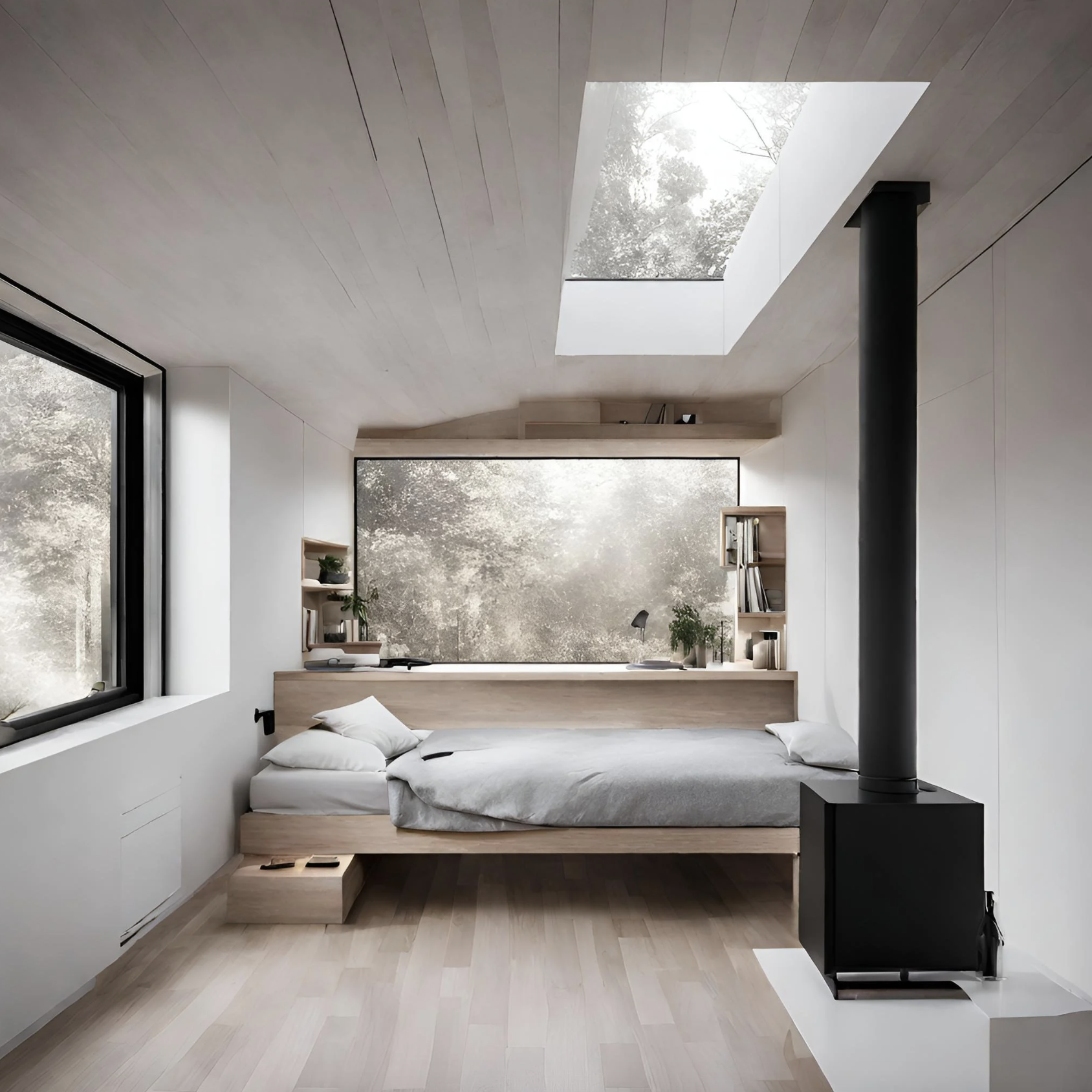Tiny House, Big Impact: Maximize your Home’s Heating and Cooling
When it comes to living tiny, we love that you can still create a big impact. From recycled materials, up-cycled furniture, solar panels, and other green energy options, there is a lot you can do to reduce your footprint, both inside and outside your tiny home. In addition to these creative and green solutions, one of the single biggest impacts you can implement is reducing your overall energy usage. In terms of residential home design the biggest power draws/energy waste are the heating and cooling systems. If you are considering building a tiny or small home, then congrats, you’ve already taken one of the biggest steps in reducing your overall carbon footprint.
If you want to learn more about energy efficiencies for your tiny space, here is a basic guide to get you started. And if you want to find out your current space’s electrical consumption, check out this interactive calculator to see how square footage impacts energy usage.
Utilize Cool Roofing
First off-what is “Cool Roofing”? Cool roofing involves several key elements: color, material, and insulation. By carefully considering these factors, you can significantly reduce the amount of heat that enters your home through the roof. Having a cool roof costs the same as a regular roof and is can be up to 50F cooler than a traditional roof.
Roof Color:
Opting for a lighter-colored finish, such as white, can help reflect sunlight rather than absorbing it. Changing the color alone can decrease heat absorption by over
This simple yet effective strategy is particularly advantageous for tiny homes, as many designs feature unconventional roofing materials that can be easily painted.
Material:
The choice of roofing material also plays a critical role in heat transfer. Materials like wood shingles and metal roofing with reflective coatings can help reduce heat absorption. Modern shingle options are available in lighter varieties, while slate tiles, while aesthetically pleasing and durable, they tend to absorb more heat.
Insulation:
Proper insulation between the roof and the interior is essential for maintaining a comfortable indoor temperature. Investing in high-quality insulation with a high R-value can prevent heat transfer and improve energy efficiency.
Cool Roof Alternative: Green Roof
This is a new concept that instead of traditional (or should we say modern) roofing materials, it uses plants and vegetation which helps reduce heat absorption. It does require far more upkeep, but is one of the best environmental options, and dare we say attractive.
Make sure you know your climate and do your research on the plants you wish to cultivate. Here is a more in-depth resource on cultivating a green roof.
Be Strategic With Windows
Consider window placement that allows in the cooler morning sun (especially during winter months), while trying to minimize the direct sunlight of the afternoon sun.
Lower window placements with some smaller higher window placements can make it easier to create a cross breeze letting the cooler air in and the warmer air out.
Awnings and Overhangs
Awnings can block more than 60% of the heat from the sun entering in through the windows. It is the most effective option for blocking direct sunlight.
Roof overhangs and windows with higher placement also allow for some natural light to come in with almost no direct light, this is great if you want to keep windows open to vent some heat.
Automated Window Coverings
Blinds and curtains play a major roll in maintaining a comfortable home temperature. They are not often utilized effectively because the vast majority of window blinds stay in the same position every day.
That’s why we recommend considering an automated blind system, it actually saves more in electrical than it uses.
Since can be automatically set to allow in some morning sun for passive lighting, while covering the windows during the afternoon keeping the temperature down, blocking the afternoon sun. Check out this great option for your home.
Strategize Your Energy Management
Different times of day have different strain on the electrical grid. Generally its the lowest at night, and highest around 3-4pm largely due to AC usage.
If your home is well insulated consider a smart thermostat, and setting it to be noticeably cooler at night. During the day (or at least for part of it) you can keep the AC off or running a lighter load because of passive cooling. The cooler than average air is still working from the temperature set at night. In a way your home can act like a thermal battery, cooling more efficiently at night and letting the residual temperature help reduce the heating burden during the day.
If you want to learn more about this concept here is an excellent video breaking down this strategy.
To Wrap Up
Ensuring you have small floor plan, good insulation, and good sun mitigation strategies can drastically cut your reliance on home heating systems and really reduce your environmental impact. You can then take things further by ensuring your appliances have good energy ratings, and employing other measures like tankless water heaters. This is just a basic overview, but we will continue to add resources to help improve your tiny home’s environmental foot print. Stay tuned for appliance and insulation recommendations!
As always if you are interested in tiny homes, experiential design, airstreams and more check out our newsletter. And don’t forget, if you have a project in mind we offer free consultations!







